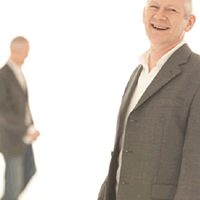
For anyone watching the technology space, it would be hard to dispute that Apple has been a shining example of a company that understands innovation. Whether it's the iPOD, the iPhone or the recent super-thin, super-cool laptop, Apple understands the direction of the crowd and seems to remains one step ahead.
For companies around the world, the ability to innovate is crucial to success, yet so often the processes and techniques that are required to achieve true innovation are ad hoc and left to hope and chance.
I now travel all over the UK and Europe helping businesses of all kinds to become more innovative and I'm mainly working with these clients in the area of brand meaning and creative thinking. What I'm learning is that creativity becomes increasingly important as each month passes, particularly as we enter a tough economic period. It's not the strongest who will survive but the most creative.
One method of problem solving that I introduce to my clients is morphological analysis. Morphological analysis was originally created in the 1940s by Swiss-born astrophysicist Fritz Zwicky, the scientist responsible for identifying supernovae stars as well as ‘dark matter' in the universe.
Working with the early American space programme, Zwicky developed the technique to help solve intensely complex problems such as how to formulate rocket fuel. The technique's great strength is that it can analyse the most complex and unquantifiable of problems: ones for which there is no single ‘correct' answer, and which are characterised by their tendency to change with every intervention. Such problems have become known in science as ‘messy' or ‘wicked' problems, and they are found not just in science, but also in business, public sector organisations, government, politics, and throughout society.
The great thing about morphological analysis is that it is a robust scientific approach that can truly liberate thinking. The alternative is brainstorming, which is undisciplined and unstructured. Worse than this, people will know that in brainstorming sessions people can have their own agenda, loud people tend to dominate the discussions and quiet people tend to get quieter. In my experience, brainstorming can bring out the worst in people and the results are rarely constructive.
Using morphological analysis, for even simple problems, can liberate thinking. Ideas fly around the room, growing and developing. Techniques such as this thrive on the collective talents and experiences of those involved and the final results often amaze and inspire all those that have contributed. One aspect that makes such an approach so powerful is that it uses ‘brains', rather than ‘emotions'.
I often describe morphology as ‘left brain' thinking. It has a sequence, is analytical and is really a process of looking at all you know, from a different angle. In many ways, it is an ideal method for engineers to explore new avenues. However, I also encourage my clients to indulge in some ‘right brain' thinking, whereby the client explores the problem using intuition and looks at the problem with a more holistic approach but, again, in a structured way.
A further technique that I introduce to my clients is called ‘oblique strategies' and it has a curious origin. For those who follow rock music, the name Brian Eno will be significant. Originally as a key member of Roxy music and later in his own right as a producer, Eno is well respected in creative circles.
Eno was friends with a British painter called Peter Schmidt and both kept a set of basic working principles which guided them through moments of pressure when working through a painting session or whilst running up a big studio bill. Both Schmidt and Eno realised that the pressures of time tended to steer them away from the ways of thinking they found most productive when the pressure was off. From these working principles they develop a pack of cards called ‘oblique strategies'. Each card contains a strategy and the first ever oblique strategy is said to be ‘honour thy error as a hidden intention'.
When we are under pressure, we tend to take a head on approach to problems and do not explore the many other possibilities that may exist. With the oblique strategy technique, you pick a card and go with whatever it suggests. The cards really do help people view a problem or situation with a new attitude and enable them to take a more creative, more innovative approach to such issues as product development, business management and brand strategy.
One reason that business leaders are now interested in ‘creative thinking' is that they have begun to realise the sheer power that it can have in the modern business environment. Innovative companies such as Google, Ebay and Amazon have become global mega companies in a very short space of time. The financial might of traditional corporation can no longer guarantee their dominance and survival.
When I'm working with clients, they know that to succeed they need to change the way they think. Just like Apple, it's about staying ahead. It's about product innovation, brand innovation and organisational innovation. For them, creative thinking isn't a fluffy, arty concept but about helping them make money and very often it's simply about survival.
Simon Middleton is a brand development expert who has worked with clients including Norwich Union, Deloitte Touche, Lovells, Arval, Xansa, Legal & General, Akzo Nobel and Comi